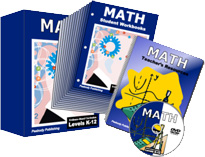Fidelity of Implementation: Selecting and Implementing Evidence-Based Practices and Programs (Archived)
Assessment
Take some time now to answer the following questions. Please note that the IRIS Center does not collect your Assessment responses. If this is a course assignment, you should turn them in to your professor using whatever method he or she requires. If you have trouble answering any of the questions, go back and review the Perspectives & Resources pages in this module.
- How can school personnel identify an evidence-based practice or program? What resources might they consult during this process?
- What is fidelity of implementation and why is it important?
 Discuss at least three actions that school personnel can take to promote the fidelity of implementation of a new practice or program.
Discuss at least three actions that school personnel can take to promote the fidelity of implementation of a new practice or program.- Discuss four goals of ongoing PD support.
- The sixth-grade teachers at Jefferson Middle School are implementing a new math program this year. School personnel identify the key procedures of the program (see below). Using these step-by-step procedures, help the Jefferson Middle implementation team create a fidelity measure (e.g., observation form, teacher survey). Hint: Be sure to include items related to quality of implementation.
|
Math Program
Step-by-Step Procedures General Procedures:
Daily Procedures:
|
- It is the end of the school year and the Jefferson Middle School implementation team wants to evaluate whether the new math program was effective.
- If fidelity of implementation for the sixth-grade teachers is 85 percent and the students’ math scores are higher than last year’s, what conclusions can the team draw about the effectiveness of the intervention? Explain.
- If fidelity of implementation for the sixth-grade teachers is 47 percent and the students’ math scores are higher than last year’s, what conclusions can the team draw about the effectiveness of the intervention? Explain.
- Mr. Whitaker implements the math program for 150 minutes per week. He conducts math lessons three days per week for 50 minutes, instead of daily for 30 minutes as is prescribed by the program manual. Is Mr. Whitaker implementing with fidelity? Explain.
- The local high school is using the same math program as Jefferson Middle School for its students who have learning disabilities in math. Although the teachers implemented with 95 percent fidelity, the students’ outcomes did not improve. Offer one possible explanation for the students’ lack of improvement.